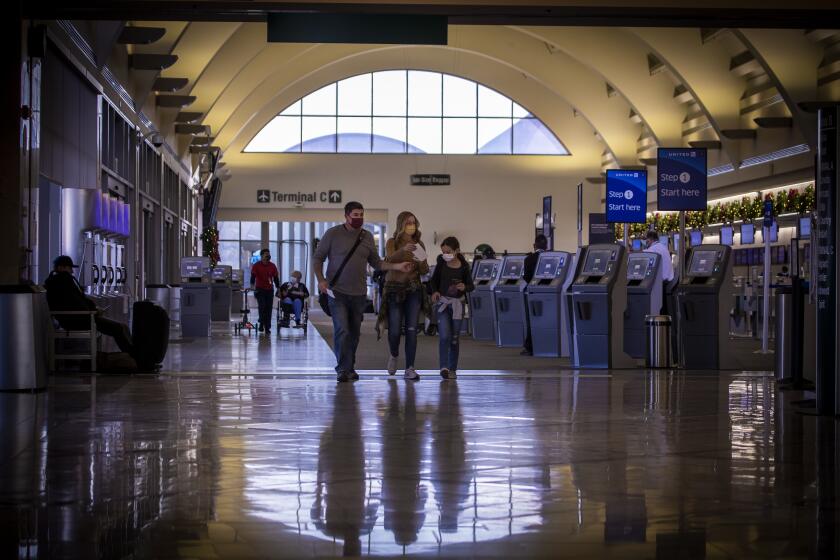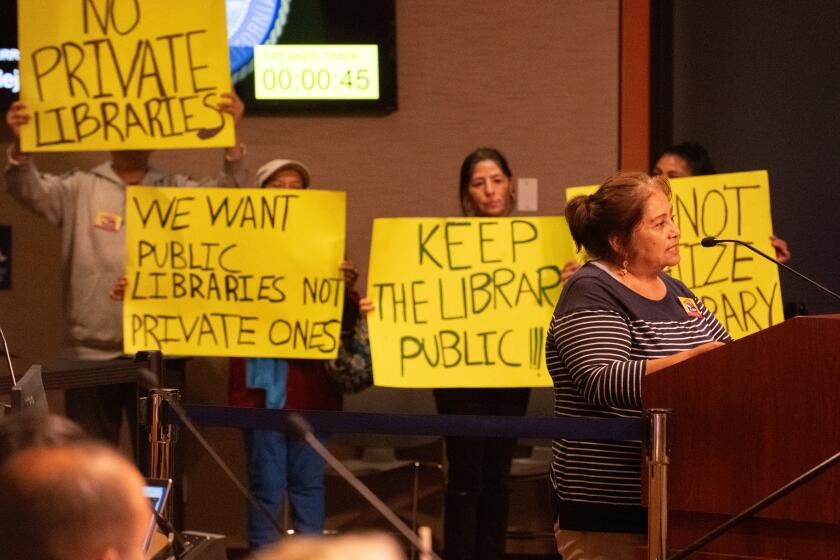Costa Mesa moves toward removing incentives for high-density housing on Harbor and Newport boulevards
Costa Mesa City Council members took a step Tuesday toward removing so-called residential incentive overlays that allow high-density residential development at specified locations along Harbor and Newport boulevards.
The overlays were created as part of the 2016 update to the city’s general plan. They permit building up to 40 housing units per acre at certain commercial properties along the two thoroughfares.
At the time of the update, those who supported the overlays said the goal was to encourage redevelopment of problematic properties — namely motels that some have decried as hotbeds for drug use or criminal activity.
On Tuesday, though, the council voted 3-2 — with Mayor Pro Tem Allan Mansoor and Councilman Jim Righeimer opposed — to start the process of deleting them almost entirely.
The exception is the site of the closed Costa Mesa Motor Inn at 2277 Harbor Blvd., where a previously approved apartment project has been tied up in litigation.
“There is a place for densification and then there is a place where you don’t want to have that much density,” Councilwoman Katrina Foley said. “Harbor Boulevard should be a commercial corridor; it shouldn’t be high-rise apartments ... and same with Newport Boulevard. That is not the right place for density.”
Mayor Sandy Genis, who in 2015 voted with Foley against creating the overlays, said she’s consistently been concerned that they were “a huge grant of density where we weren’t getting anything for it,” such as additional requirements to build affordable housing units.
Mansoor, on the other hand, said he thinks the overlays are a useful redevelopment tool.
“I just want to have that option to offer something,” he said.
Righeimer characterized eliminating the overlays as “massive down-zoning across our city” and said he didn’t think affected property owners had been appropriately notified.
Deleting the overlays requires amendments to the general plan and municipal code, a process involving reviews by both the Planning Commission and City Council.
Small-lot standards
On a 4-1 vote, with Righeimer opposed, the council directed staff to initiate a code amendment to modify development standards for projects processed under the city’s small-lot ordinance so they mirror those of common-interest developments such as condominiums.
While the standards are already largely the same, the change would require small-lot projects to provide more open space and, in some cases, additional parking or a greater distance between buildings.
The small-lot ordinance, adopted in 2014, was designed to ease development standards for proposals of 15 or fewer detached homes in areas zoned for multifamily units.
Supporters say the ordinance encourages redevelopment and creation of housing on underused land. Critics have contended it allows excessive building that can create additional traffic, parking and other quality-of-life issues.
The council voted unanimously Tuesday to direct staff to further review the other urban plans and overlay districts on the city’s books — which outline development standards in certain portions of the Westside and the Sobeca district around the Lab and the Camp shopping centers on Bristol Street — and see whether any changes are necessary.
Twitter @LukeMMoney
All the latest on Orange County from Orange County.
Get our free TimesOC newsletter.
You may occasionally receive promotional content from the Daily Pilot.




